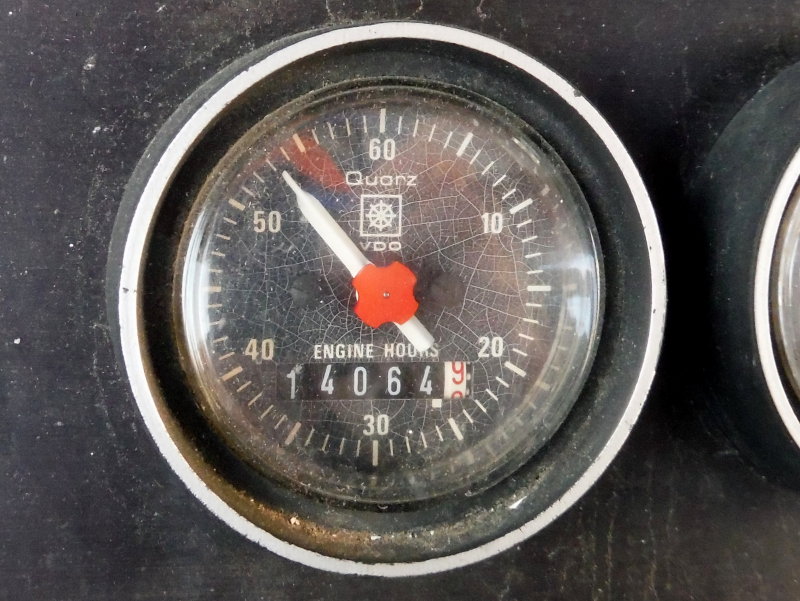I plan to write an article for boatdiesel on this topic including plumbing systems to make it easy to flush, so I thought I would throw out some thoughts and get your comments before I start on it.
The case for flushing your engine's raw water system with fresh water after each use is that it reduces corrosion of the metal components. So let's examine why:
Without a doubt, the principle components in a raw water system, bronze end caps and cupro-nickle tubes, corrode less in fresh water than salt water. And some, Tony Athens in particular, recommend fresh water flushing to extend the life of after coolers which are susceptible to failure in a marine environment.
Let's examine the two premises.
Yes corrosion is less in fresh water, but what about the effect on protective anodes. ABYC and others recommend aluminum anodes in fresh water service because zinc forms a protective film in fresh water that makes it ineffective as a sacrificial anode. Aluminum anodes are effective in both fresh and salt water.
So, if we flush with fresh water and use zinc anodes aren't we losing the protection of the zinc when we run the engine in salt water? I have posted that fresh water flushing extends the life of my zincs several fold. Maybe I am just kidding myself. Perhaps the solution is to flush with fresh water and use aluminum anodes. You get the best of both worlds: low corrosion while sitting at the dock, but also protection while operating in sea water.
Now let's talk about after coolers. The problem with after coolers is that there is a tiny barrier between the air side and the salt water side- an o-ring that separates the two. The o-ring seals the bronze tube sheet of the heat exchanger bundle (core) to the aluminum shell.
But from looking at dozens of pictures of failed after coolers, they all have significant corrosion of the aluminum surface, not the bronze tube sheet. Fresh water flushing (with the proper anode) will reduce corrosion of the bronze, but not the aluminum. I believe that after coolers fail because condensate on the air side coupled with a salt air environment corrodes the aluminum to the point where the o-ring will no longer seal against it.
I don't know of any way to protect the aluminum other than to assemble the tube bundle to the shell with lots of water proof marine grease as Tony Athens recommends. The grease will keep moist salt air away from the critical o-ring interface.
So, here are my conclusions: Flush with fresh water but use aluminum anodes. Don't expect that flushing will extend the life of after coolers.
What are your thoughts?
David
The case for flushing your engine's raw water system with fresh water after each use is that it reduces corrosion of the metal components. So let's examine why:
Without a doubt, the principle components in a raw water system, bronze end caps and cupro-nickle tubes, corrode less in fresh water than salt water. And some, Tony Athens in particular, recommend fresh water flushing to extend the life of after coolers which are susceptible to failure in a marine environment.
Let's examine the two premises.
Yes corrosion is less in fresh water, but what about the effect on protective anodes. ABYC and others recommend aluminum anodes in fresh water service because zinc forms a protective film in fresh water that makes it ineffective as a sacrificial anode. Aluminum anodes are effective in both fresh and salt water.
So, if we flush with fresh water and use zinc anodes aren't we losing the protection of the zinc when we run the engine in salt water? I have posted that fresh water flushing extends the life of my zincs several fold. Maybe I am just kidding myself. Perhaps the solution is to flush with fresh water and use aluminum anodes. You get the best of both worlds: low corrosion while sitting at the dock, but also protection while operating in sea water.
Now let's talk about after coolers. The problem with after coolers is that there is a tiny barrier between the air side and the salt water side- an o-ring that separates the two. The o-ring seals the bronze tube sheet of the heat exchanger bundle (core) to the aluminum shell.
But from looking at dozens of pictures of failed after coolers, they all have significant corrosion of the aluminum surface, not the bronze tube sheet. Fresh water flushing (with the proper anode) will reduce corrosion of the bronze, but not the aluminum. I believe that after coolers fail because condensate on the air side coupled with a salt air environment corrodes the aluminum to the point where the o-ring will no longer seal against it.
I don't know of any way to protect the aluminum other than to assemble the tube bundle to the shell with lots of water proof marine grease as Tony Athens recommends. The grease will keep moist salt air away from the critical o-ring interface.
So, here are my conclusions: Flush with fresh water but use aluminum anodes. Don't expect that flushing will extend the life of after coolers.
What are your thoughts?
David


